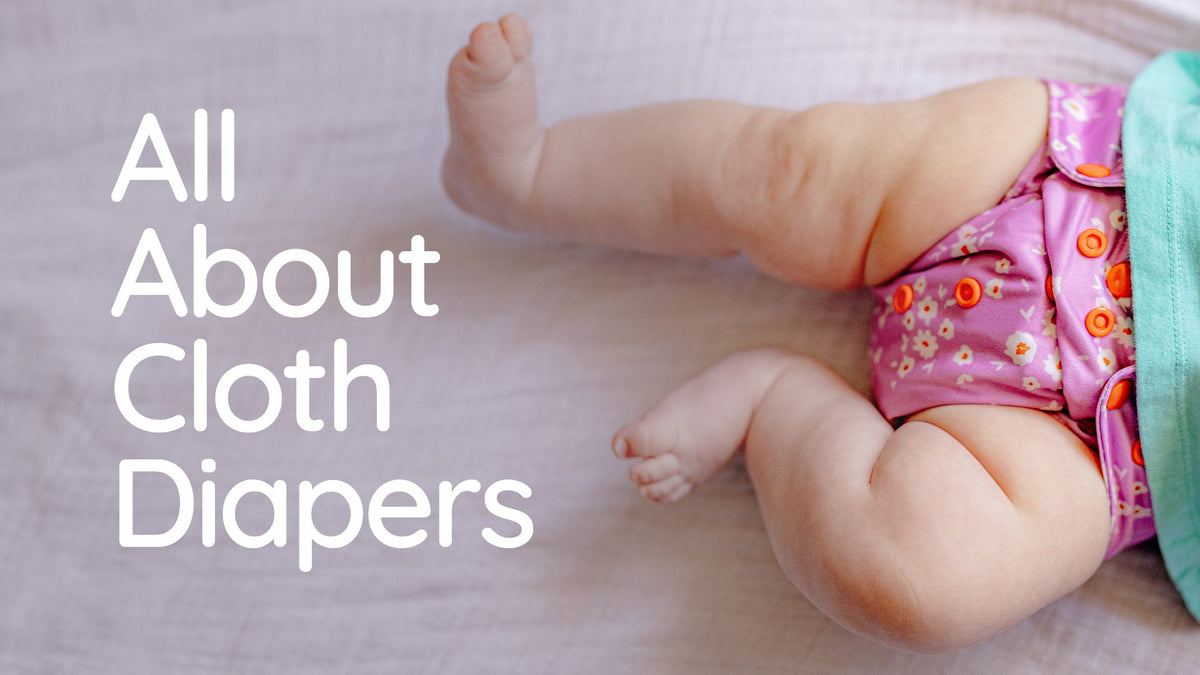
Cloth Diapers at a Glance: Everything you Want to Know in Under 5 Min.
|
|
Time to read 3 min
|
|
Time to read 3 min
Reusable diapers have come a long way in recent years, offering modern parents more convenience, comfort, and eco-friendly options than ever before. Whether you're a seasoned parent or brand new to the diapering game, this intro will give you the confidence to dive into the world of cloth diapers. So let's get started!
Newborns: Most newborns will soil 10-16 diapers a day. We typically recommend that families planning to time cloth diaper full time with pocket style diapers have at least 30 diapers for newborn babies.
Toddlers: Toddlers will soil 5-7 diapers a day. We typically recommend that families planning to cloth diaper full time with pocket style diapers have at least 15 diapers for older toddlers.
Looking for more customized results? Take our quick survey here »
New cloth diapers should be washed at least once before wearing them on your baby. Some sources will recommend multiple wash cycles to rinse the natural oils from the fibers of the absorbency, but this is not required and is often excessive.
Used cloth diapers will need to be sanitized with bleach before wearing them on your baby. You can learn more about how to properly sanitize pre-loved or used cloth diapers here »
Before storing cloth diapers, scrape, shake or spray all solid waste into the toilet. Poop from formula fed babies should also be removed before washing.
Breastfed poop is water soluble and may be washed without rinsing, however some families prefer to spray breastfed poop too in order to minimize staining.
Soiled cloth diapers can be stored in an open pail with or without a liner or a sealed wet bag. We advise against storing soiled cloth diapers in water before washing.
Choose a mainstream laundry detergent that contains both surfactants and enzymes.
Surfactants break up stains and disperse dirt that otherwise wouldn't dissolve in water.
Enzymes are important as they break down and remove specific types of stains, such as grass, chocolate pudding, and blood. Enzymes are naturally occurring and biodegradable, and are sensitive skin-friendly. We recommend Tide powder as a great starting point.
Looking for a scent free option? Try All Free and Clear
Looking for a more eco conscious alternative? Try Seventh Generation Laundry Detergent
For more help with choosing a wash routine, check out this page »
Odor, rashes and leaks when cloth diapering can be an indication of a problem. But don’t worry, we can help!
Odor: Ammonia or barnyard (poop) odor means that there is something about your wash routine that’s not working effectively. Learn more about decoding odor and how to fix weird smells here »
Rashes: Rashes are also often an indication that there is something off about your wash routine. Too much detergent and not enough washing can both cause leaks in cloth diapers. Don’t worry, we can help! Message our website chat and we can help troubleshoot the cause of your rash.
There are three most common causes of leaks in cloth diapers.

